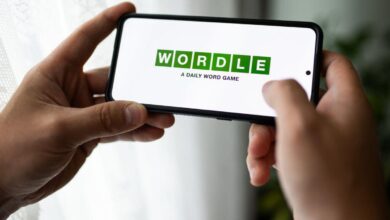ISPs keep giving false broadband coverage data to the FCC, groups say


Getty Images | Andrey Denisyuk
Internet service providers are still providing false coverage information to the Federal Communications Commission, and the FCC process for challenging errors isn’t good enough to handle all the false claims, the agency was told by several groups this week.
The latest complaints focus on fixed wireless providers that offer home Internet service via signals sent to antennas. ISPs that compete against these wireless providers say that exaggerated coverage data prevents them from obtaining government funding designed to subsidize the building of networks in areas with limited coverage.
The wireless company LTD Broadband (which has been renamed GigFire) came under particular scrutiny in an FCC filing submitted by the Accurate Broadband Data Alliance, a group of about 50 ISPs in the Midwest.
“A number of carriers, including LTD Broadband/GigFire LLC and others, continue to overreport Internet service availability, particularly in relation to fixed wireless network capabilities and reach,” the group said. “These errors and irregularities in the Map will hinder and, in many cases, prevent deployment of essential broadband services by redirecting funds away from areas truly lacking sufficient broadband.”
ISPs are required to submit coverage data for the FCC’s broadband map, and there is a challenge process in which false claims can be contested. The FCC recently sought comment on how well the challenge process is working.
CEO blasts “100-year-old telcos”
The Accurate Broadband Data Alliance accused GigFire of behaving badly in the challenge process, saying “LTD Broadband/GigFire LLC often continues to assert unrealistic broadband claims without evidence and even accuses the challenger of falsifying information during the challenge process.”
GigFire CEO Corey Hauer disputed the Accurate Broadband Data Alliance’s accusations. Hauer told Ars today that “GigFire evaluated over 5 million locations and established that 339,598 are eligible to get service and that is accurately reflected in our BDC [Broadband Data Collection] filings.”
Hauer said GigFire offers service in Illinois, Iowa, Minnesota, Missouri, Nebraska, North Dakota, South Dakota, Tennessee, and Wisconsin. The company’s service area is mostly wireless but includes about 20,000 homes passed by fiber lines, he said.
“GigFire wants to service as many customers as we can, but we have no interest in falsely telling customers that they qualify for service,” Hauer told us.
Hauer also said that “GigFire uses widely accepted wireless propagation models to compute our coverage. It’s just math, there is no way to game the system.” He said that telcos “feel they should get an additional wheelbarrow full of ratepayer money, and because of our coverage, they will not.”
“Many of these 100-year-old telcos were so used to being monopolies, that it appears they struggle with consumers that live in their legacy telco boundaries having competitive choices,” Hauer said.
Wireless claims hard to verify, groups say
Wireline providers have also exaggerated coverage, as we’ve reported. Comcast admitted to mistakes last year after previously insisting that false data it gave the FCC was correct. In another case, a small Ohio ISP called Jefferson County Cable admitted lying to the FCC about the size of its network in order to block funding to rivals.
But it can be especially hard to verify the claims made by fixed wireless providers, several groups that represented wireline providers told the FCC. The FCC says that fixed wireless providers can submit either lists of locations, or polygon coverage maps based on propagation modeling. GigFire submitted a list of locations.
Both the list and polygon models drew criticism from telco groups. The Minnesota Telecom Alliance told the FCC this week that “the highly generalized nature of the polygon coverage maps has tempted some competitive fixed wireless providers to exaggerate the extent of their service areas and the speeds of their services.”
The Minnesota group said that “polygon coverage maps are able to show only an alleged unsubsidized fixed wireless competitor’s theoretical potential signal coverage over a general area,” and don’t account for problems like “line-of-sight obstructions, terrain, foliage, weather conditions, and busy hour congestion” that can restrict coverage at specific locations.
“MTA members are aware that many fixed wireless broadband service providers are unable to determine whether they actually can serve a specific location and what level of service they can provide to that location unless and until they send a technician to the site to attempt to install service,” the group said.
The Minnesota telco group complained that inaccurate filings reduce the number of locations at which a telco can receive Universal Service Fund (USF) money. It is often virtually impossible to successfully “challenge the accuracy of fixed wireless service availability claims that can adversely impact USF support,” the group said.
Source link




